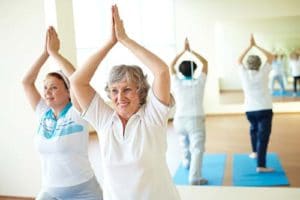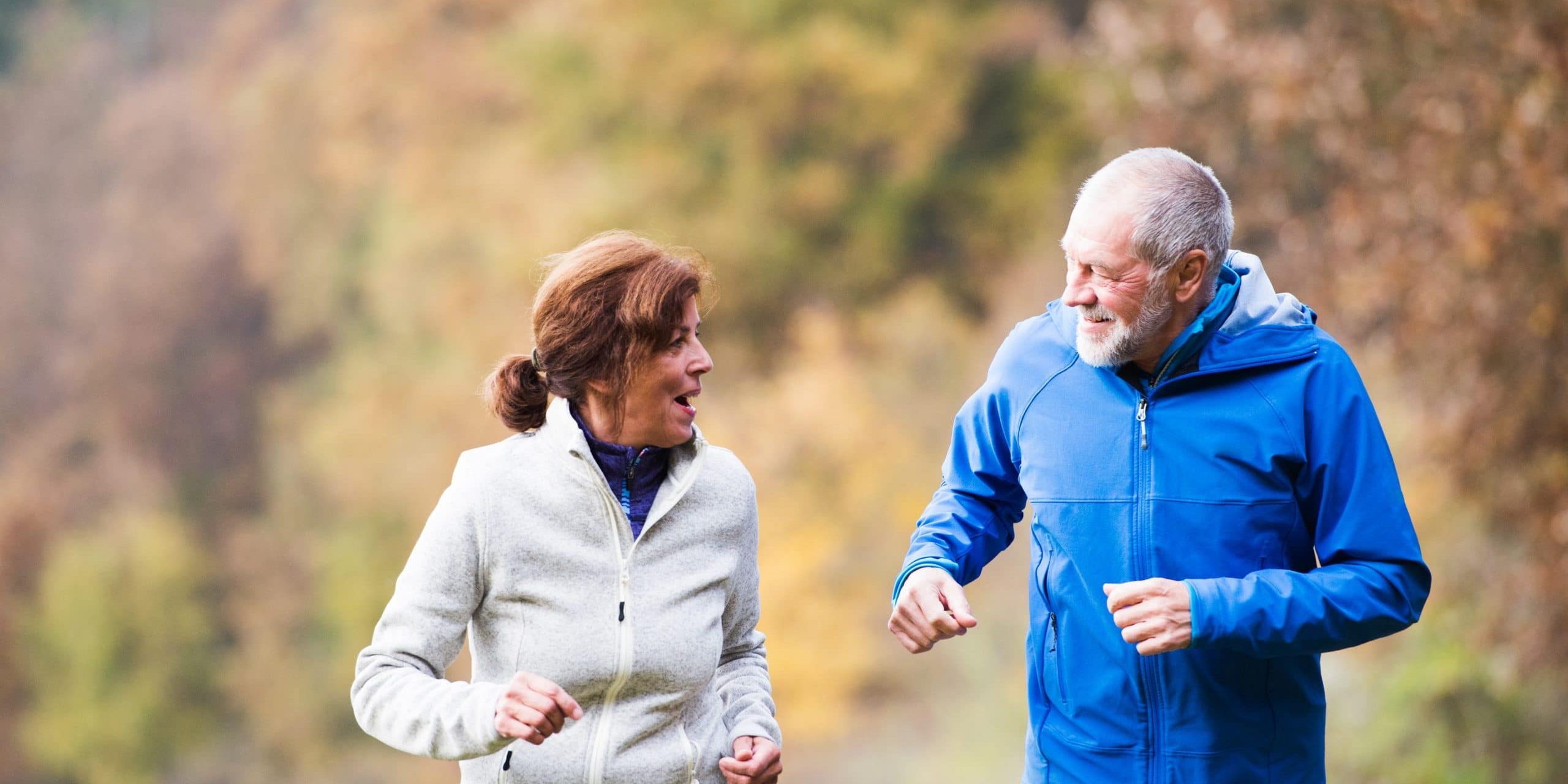Chronic obstructive pulmonary disease (COPD) causes the individual’s lungs to gradually lose their ability to get enough oxygen to the body. This can result in a feeling of breathlessness, making people with COPD reluctant to engage in exercise.
But exercise is extremely important for people with COPD. The less active you are, the less you’ll be able to do. The weaker your muscles are, the more oxygen you will need for everyday activities like cooking or shopping.
The key to slowing down the progression of COPD is to strengthen your body with proper exercise. It’s important to focus on exercises that help your chest muscles stay active. And it’s also important to keep up strength in your legs and arms so that regular routine activities won’t be so challenging.
Breathing Exercises for COPD Patients
Breathing exercises are an important way to strengthen your breathing muscles when you have COPD. With the proper breathing exercises, you will be able to get more oxygen into your lungs – enabling you to breathe easier and with less effort.
Below are two deep breathing exercise examples: pursed-lip and diaphragmatic breathing. Individuals who suffer from COPD will want to do these exercises for 5 – 10 minutes, 3 – 4 times a day.
1- The Pursed-Lip Breathing Exercise
The pursed-lip breathing exercise is a method used to help prevent air from getting trapped in your lungs. This breathing exercise can also help relieve stress and anxiety, including stress related to the feelings you might have due to being short of breath.
Here are the 4 pursed-lip breathing exercise steps:
- Relax your shoulders and neck.
- Breathe in through your nose for a count of three.
- Purse your lips like you are about to whistle and release the air through your lips.
- Exhale for about twice as long as you inhaled, but avoid forcing the air out.
2- Diaphragmatic Breathing
The diaphragmatic breathing exercise helps COPD patients to strengthen their diaphragm. Your diaphragm is a dome-shaped muscle that moves up and down beneath your lungs as you breathe.
For this exercise, you will want to start slowly with just a few breaths. The end goal is to get up to 12 deep breaths without getting tired.
Here are the 4 steps to diaphragmatic breathing:
- Lie on your back with a pillow under your knees.
- Place one hand on your chest, and the other hand on your stomach.
- Try to keep your chest still, but as you breathe allow your stomach to rise.
- Breathe in for a count of three, then breathe out slowly through pursed lips for a count of six.
Coughing Techniques

Coughing due to excess mucus buildup is one of the main symptoms of COPD. Keeping hydrated can help to thin the mucus, making it easier to clear from the lungs. Practicing and using the following coughing techniques can also help to clear the airways more effectively without overtiring you.
1- The Huff-Cough
- Sit in a chair and take several deep breaths as you would in diaphragmatic breathing.
- Have your hand on your stomach, and breathe normally.
- Tighten your stomach and chest muscles, and have your mouth open.
- Force air out while whispering “huff”.
2- Controlled Coughing
- Have your feet on the floor while sitting down, and slightly lean forward.
- Your arms should be folded across your stomach while you breathe in through your nose.
- Lean forward against your folded arms, and exhale.
- Produce 3 short coughs with your mouth partially open.
- Breathe in through your nose again, and take a rest.
Try to avoid taking deep quick breaths through your mouth. Instead, try to use deep breathing techniques through your nose.
Staying Active With COPD

Staying active is so imperative to COPD patients. Inactivity causes your muscles to slowly lose their strength. Weak muscles need more oxygen, so by not fitting proper exercise into your weekly routine, you may be worsening your COPD symptoms. Exercising can help slow down the progression of symptoms.
Below are some types of exercises you should be considering in order to stay active. It is always best to speak to a health care professional before starting a new exercise program. Start slowly and sit down for a few minutes if you’re out of breath. Go at your own pace.
Walking
Walking is a great exercise for anyone with COPD, especially if you haven’t been active for awhile. Start by walking at a slow pace and add a little extra distance each week in order to build up your strength. Walk indoors (e.g., in a shopping mall), on a treadmill, or take a walk outside on a nice day.
Ride a Bike
Adding a stationary bike to your weekly routine is a great way for COPD patients to stay active. You can join a gym, or ride in the privacy of your home. Once you’re feeling confident, you might try to go outside for a bike ride and get some fresh air.
Weights and Home Exercises
Exercises that strengthen your arms and legs can be done at home or in the gym. You can use light hand weights, elastic bands, or even water bottles to exercise your arms. Calf raises and leg extensions are easy exercises that you can do at home to help build and strengthen your leg muscles.
Tai Chi
This ancient Chinese practice is perfect for COPD patients. It’s slow and meditative, helps tone muscles, and focuses on the heart and lungs. The meditative nature of this practice can also help with your anxieties and stress.
The exercises described above can help you to take the first steps towards better fitness. Once you start to feel more confident, you may want to switch things up so you don’t get bored. Consider joining a walking or biking club to avoid social isolation.
And if you use oxygen, that’s okay, most workouts can still be done with your oxygen. Longer tubing can be used at home, and “travel tanks” can help you to more easily get out and about.
Always talk to your doctor before starting a new workout routine.
Pulmonary Rehabilitation Programs

Your doctor might recommend joining a pulmonary rehabilitation program. These programs have nurses and trained professionals there to supervise and help teach COPD patients how to properly exercise. They also offer support with quitting smoking and other lifestyle changes and treatment strategies that can help you to cope with COPD.
Precautions When Exercising with COPD
Be sure to monitor your condition when exercising, especially when beginning a new workout routine. If you experience any of the following signs or symptoms, stop exercising right away. Sit down, and keep your feet elevated while resting. If you don’t feel better right away, call 911. Even if you do feel better, make sure you tell your doctor right away about any of these symptoms.
Stop exercising if these symptoms occur:
- Nausea
- Dizziness
- Weakness
- Rapid or irregular heartbeat
- Severe shortness of breath
- Pain
- Pressure or pain in your chest, arm, neck, jaw, or shoulder
If you or a loved one has COPD and would like to learn more, see our 11 Guidelines for For Managing COPD at Home.
The information in this article should not be taken as professional medical advice. If you are having issues or have health-related concerns, you should see your personal physician.
This page is also available in:
![]() English
English


